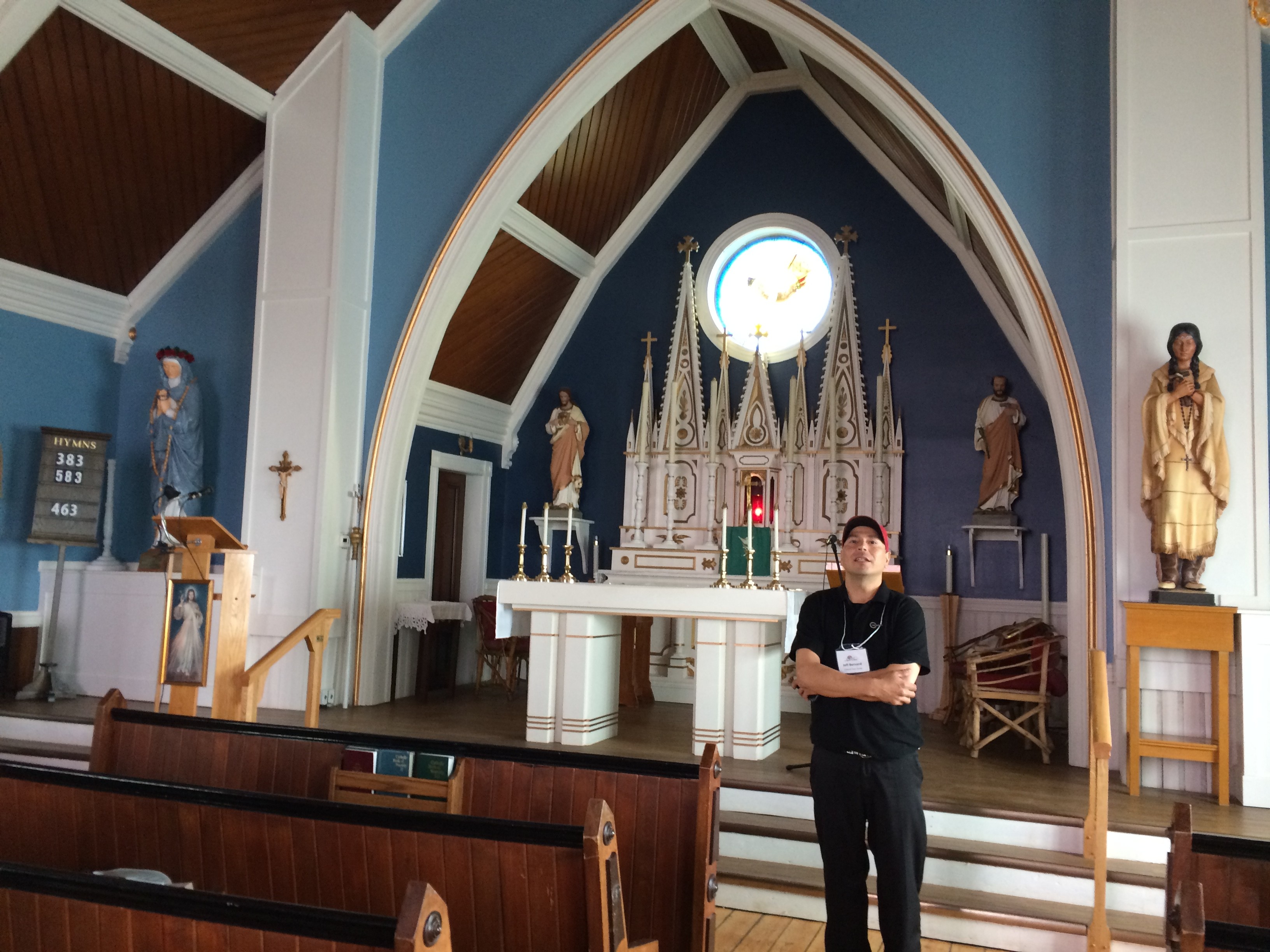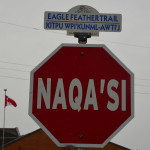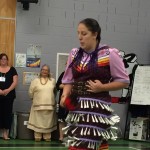The wind and rain seem to be coming at us from multiple directions as we crisscross the streets of Lennox Island on the northwest coast of Prince Edward Island (PEI), Canada’s smallest province. We pull our hoods tightly around our heads as we race from one building to another. All of these structures, as well as the island, belong to the Mi’kmaq Nation, one of Canada’s First Peoples.

Today we are guests of the Mi’kmaq and despite the blustery weather, we have received a warm welcome by several of the nation’s leaders in the local school gym.
Our ship, the 198-passenger Ocean Endeavor, docked a bit earlier in nearby Summerside (population 15,000), on the island’s southern coast. This small port is one of the stops on Adventure Canada’s “Mighty St. Lawrence” 11-day itinerary. Half of the passengers choose to visit Cavendish, the home of Lucy Maud Montgomery, author of the popular “Anne of Green Gables” novels. Since we visited Cavendish a few years ago, we decide to join the Lennox Island excursion, where guides escort small groups to the school, art studio, cultural center, store and St. Anne Catholic Mission.

Though few Mi’kmaq now attend church, according to our guide, the nation considers the mission an important part of their history. That’s why they work to apply often meager resources and lots of voluntary labor to restoring and maintaining the building. Today, its interior is fresh and clean.
Oddly, St. Anne’s once was a symbol of the contentious relationship between the Mi’kmaq and Canada’s European population, but today the church is a source of community pride.
The Mi’kmaq were the first indigenous people to make contact with the Europeans who arrived in this part of the New World in the 17th century. At that time, the Mi’kmaq inhabited a great swath of eastern Canada and parts of New York, but like all indigenous peoples, their numbers dwindled and much of their culture was lost.

Today, about 400 Mi’kmaq live on the island; another 500 live off-island. They are working to revive their language, culture and arts. Children are taught traditions and language in the island school, and student artisans are learning the secrets of the nation’s lost arts. Our guide also escorts us to buildings where several Mi’kmaq women recently learned how to create beautifully detailed ceramic figurines, pottery and colorful quill art, much as their ancestors did hundreds of years ago.
In the Lennox Island Cultural Centre, we see historic photographs and artifacts of Mi’kmaq ancestors, and an exquisite birch bark canoe. The exterior is smooth and water-tight and is about 6 feet or 7 feet long. Canoes of the past, however, were much longer — up to 24 feet. They were light enough to be carried by a single person but could hold a load of several hundred pounds.
We culminate our Lennox Island visit with refreshments in the school gym that include traditional Mi’kmaq bread. Our hosts bid us goodbye and as we file onto the bus for the short ride back to Summerside, I notice that the rain and wind have subsided. Still no sunshine, but quieter skies makes for easy walking in Summerside for the next three hours.
We head east on Water Street to visit the College of Piping and Celtic Performing Arts of Canada. In the gift shop, I must buy the Christmas ornament depicting Santa playing the bagpipes. (My souvenir shopping has for years been limited to postcards and Christmas ornaments depicting our destinations.)

Then we move to the auditorium where we are suddenly transported into the world of Celtic music and dance. We enjoy an impromptu concert by two upper classmen — a 12-year student of the bagpipes and a 10-year student of the Scottish-style snare drum. We have plenty of questions for them between numbers.

Later we stroll a portion of the Summerside boardwalk, which hugs the city’s harbor for 3.5 miles. The tourist shops and the waterfront are quiet, but we’re content with our visit to the two worlds of Prince Edward Island.
“The Mighty St. Lawrence” cruise, offered by Adventure Canada, has been named by National Geographic as one of its “50 Tours of a Lifetime.” Visit www.adventurecanada.com. For more photos, visit www.facebook.com/elouise.ondash.




